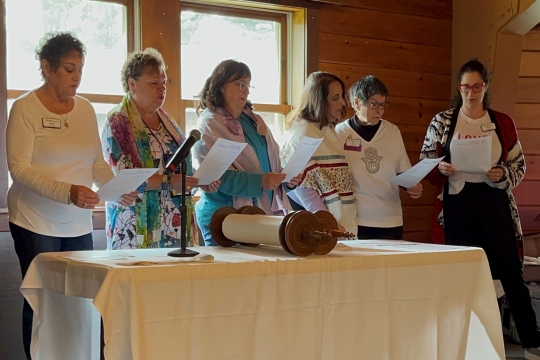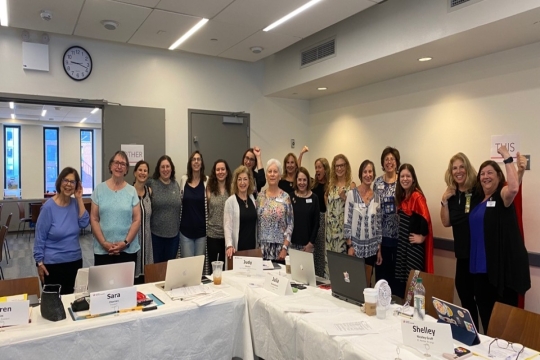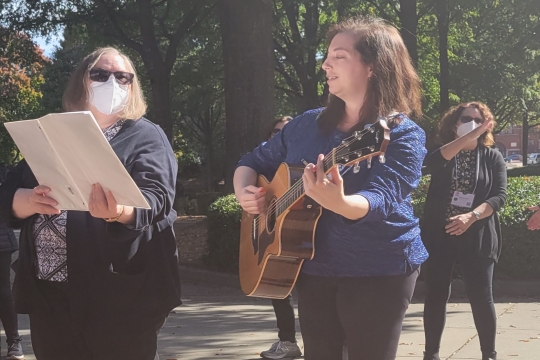As a narrative, this week’s Torah portion, Bo, discusses the last three plagues visited upon the Egyptians: locusts, darkness, and the slaying of the first-born son. It covers the beginning of the Exodus as well as ritual preparation for and customary remembrance of the Exodus. Thematically, this parashah deals with God’s omnipotence, leadership, remembrance and institutionalized memory. The text reads:
You shall observe this (the Passover ritual) as an institution for all time, for you and for your descendants. And when you enter the land that Adonai will give you, as promised, you shall observe this rite. When your children ask you, “What do you mean by this rite?” you shall say, it is the Passover sacrifice to Adonai, who passed over the houses of the Israelites in Egypt when smiting the Egyptians… (Bo 12:24-27).
It is here that we, as Jews, are instructed to celebrate Passover and to instruct our children, from generation to generation, l’dor vador, through ritual and with explanation. Literally, this pertains to keeping the memory of the Exodus alive, while this symbolically refers to remembering and teaching about all Jewish institutionalized memories—all exoduses, expulsions, annihilations, and holocausts in order to maintain our heritage and Judaism. This past November, I was privileged to take a trip to learn about historic and contemporary Jewish religion and culture in Germany with my rabbi, Lewis Kamrass, and members of my congregation. It was an incredible journey and a fabulous experience. We visited medieval centers of Jewish observance, learning and commerce. We marveled at Renaissance and Baroque German cities and palaces and how and where Jews studied and lived in these epochs. In each city we learned about the opportunities, restrictions, invitations, and expulsions of Jews by Germans. We studied 20th century German Jewish life prior to the rise of National Socialism, and then, of course, we visited sites of Nazi German oppression as well as toured places of remembrance and contemporary German Jewish life. We were in Germany for the 76th anniversary of Kristalnacht, which in Germany is called the Night of Pogroms, memorials for which are laid with wreaths of flowers proffered by various groups, including German Jewish Women’s groups! We visited Dachau, where, as a congregational community, we lit candles, participated in a special memorial service, and said kadish at dusk in the Jewish memorial. I have never felt closer to my faith, to those we have all lost, and to my co-congregants. We ended our trip in Berlin with dinner at the top of the Reichstaag. What symbolism: 21st century Jews dining at the apex of what once stood for all that wished to annihilate and exterminate us. In Munich, we visited Beth Shalom, a Progressive Congregation, where Rabbi Tom Kucera, one of the first German rabbis ordained in Germany after the Holocaust, spoke to us about the challenges and opportunities of Progressive Judaism in Germany today. It turned out I had met Rabbi Kucera before, while on the 2006 WRJ mission to Israel; we reminisced and discussed various issues important to him and WRJ. Rabbi Kucera was lavish in his praise of WRJ and thanked each woman present for their help, through support from the YES Fund, for his education. In Berlin we visited Abraham Geiger Kolleg. We saw contributions WRJ had made to Geiger, including the Cantorial Library and the Torah sent by Rosanne Selfon's congregation in Lancaster, PA. We then attended Kabbalat Shabbat services at the New Synagogue. The rabbi was energizing and the children were dancing and singing on the bima, giving all attending a sense of joy and feeling of hope for the future of Judaism in Germany. I was impressed at the new face of German Jewry and the manner in which Germany openly deals with its anti-Semitic past and promotes a future which encourages Jewish observance and community. There are 120,000 Jews in Germany and their numbers are growing faster than anywhere else in Europe. Yet a tension exists in the demographic composition of contemporary German Judaism. Many congregants are Russian immigrants, with little formal knowledge of traditional Jewish liturgy, hoping to find echoes of the few prayers and practices they were taught. Others are either survivors of the Holocaust or the children of survivors, who could not fathom life outside of Germany despite their experiences in World War II. There are also Jews by choice, attracted to Judaism for a multitude of reasons. And then there are Jews of German or European heritage who are returning from Israel or other countries to make Germany their home once more. Not everyone agrees on what German Judaism should look and feel like. As in Israel, Progressive Jewish institutions struggle for recognition and funding in the face of Orthodox dominance. Yet there is hope, optimism and growth. It is wondrous to behold! We, Women of Reform Judaism, have helped ensure this success. As a Woman of Reform Judaism, I was honored to share our contributions with my fellow congregants on the trip, and I was proud to see the fruits of our labors. How does all of this relate to Bo? Are not the Jews of Germany comparable to the Jews who escaped the tyranny of Pharaoh? The irrepressible remnant of German Judaism that survived the Holocaust has remembered the traditions passed on to them as instructed in Bo. Without that institutionalized memory, without the memories of the millions who died and those who survived, there would be no Judaism in Germany, there would be no Judaism anywhere—we were taught, we shall teach and we will survive.
Related Posts

Parashat Yom Rishon shel Rosh HaShanah

Cultivating a Culture of Accountability and Belonging

